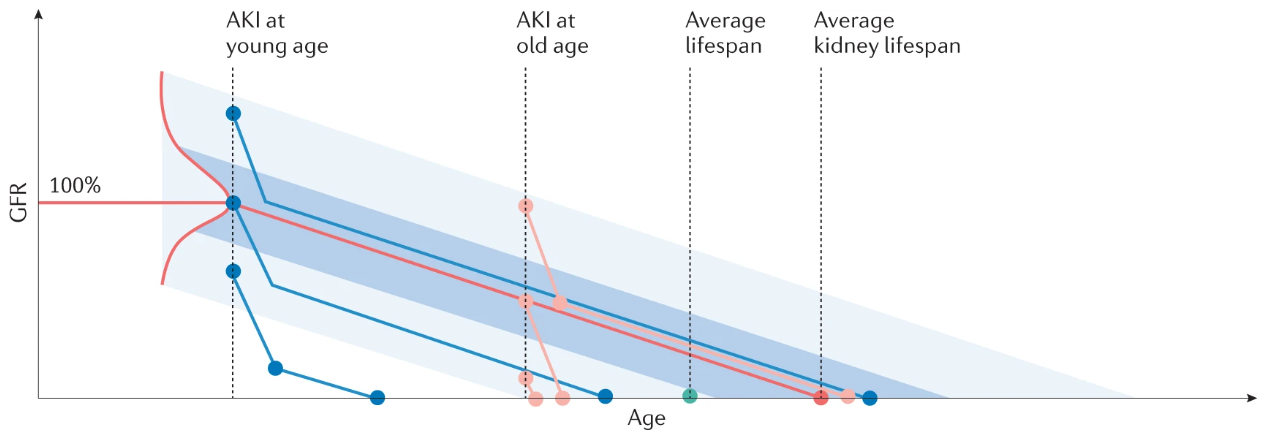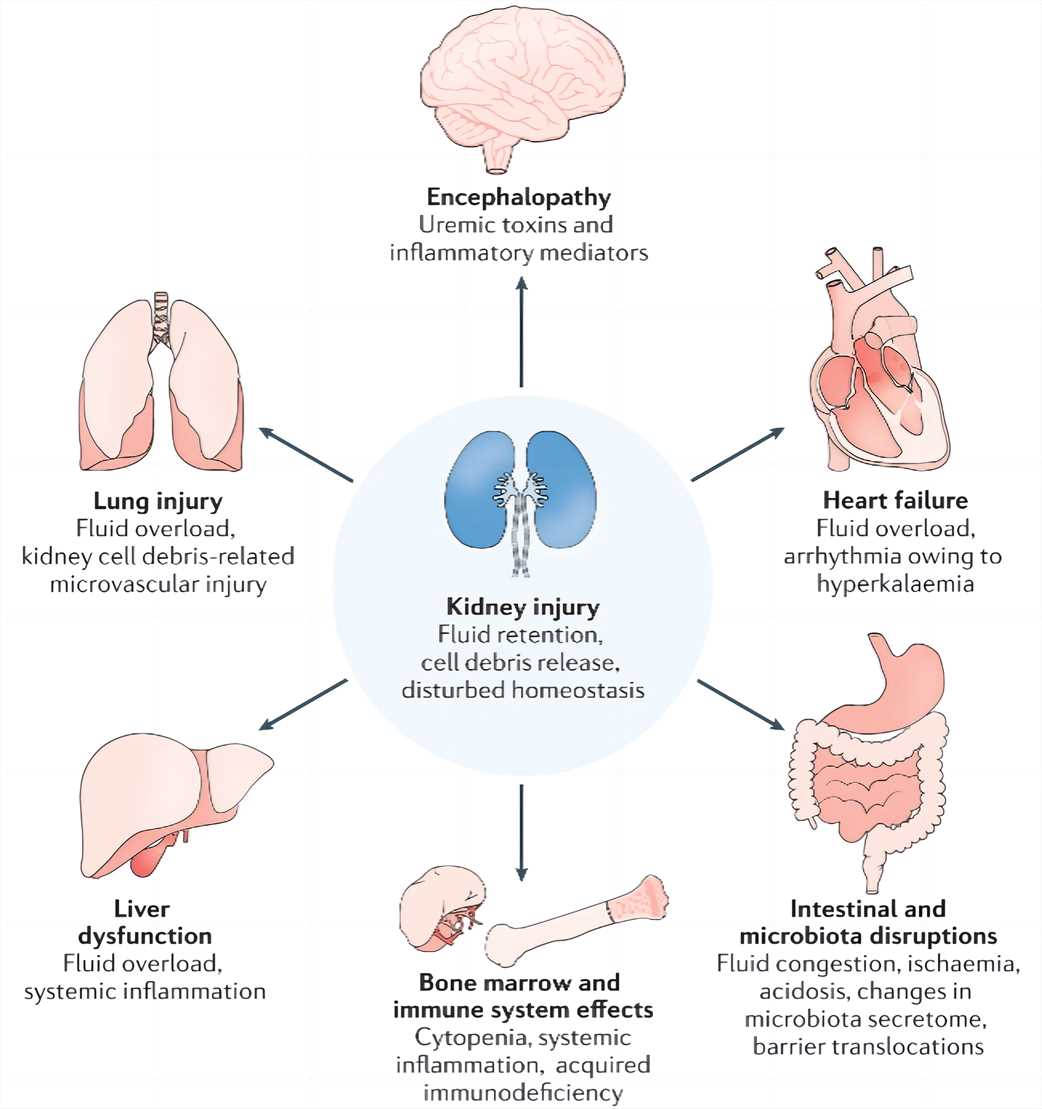Introduction of Acute Kidney Injury
Acute kidney injury (AKI, formerly known as acute renal failure), is common in hospital patients, particularly in critically ill patients, and costly surgical complication. It is typically defined as a clinical syndrome characterized by a rapid failure or damage in renal excretory function and diagnosed by the accumulation of end products of nitrogen metabolism (urea and creatinine) or decreased urine output, or both. AKI is thought to be an independent risk factor with high mortality rates estimated to range between 45-70% and has remained a great healthcare concern. This kidney disease may be observed in up to 5% of inpatient, and a diagnosis of it increases the risk of mortality 5.5 to 6.5-fold as compared to similarly ill patients without AKI. In addition, AKI is supposed to a potential cause of chronic kidney disease (CKD), as a significant number of patients may need continued dialytic therapy, or reveal a decrease in function following discharge.
 Fig.1 Impact of acute kidney injury on the lifespan of the kidney.1
Fig.1 Impact of acute kidney injury on the lifespan of the kidney.1
AKI can be classified based on the genesis of the disorder as pre-renal, renal or post-renal, which provides a convenient partition, but doesn't always obey the definitions strictly. AKI brings a build-up of waste products in blood and makes it hard for kidneys to keep the original balance of fluid in one's body. Co-morbidities are important risk factors for AKI in patients who are in the hospital, in intensive care units. The surgery in itself, especially emergency and major surgery in the critically ill, is associated with a high incidence of AKI. Certain types of surgeries, just like cardiac and transplantation surgeries, require special attention due to a higher occurrence of AKI. Here, AKI may lead to a great many complications, such as metabolic acidosis, high potassium levels, uremia, and effects on other organs including brain, heart, and lungs, finally death.
 Fig.2 AKI-induced distant organ effects.1
Fig.2 AKI-induced distant organ effects.1
Pathogenesis of AKI
The pathogenesis of AKI is very complex and multifactorial. Generally, it occurs because of the damage to a kidney tissue caused by decreased kidney blood flow from any cause (low blood pressure), exposure to substances harmful to the kidney, an inflammatory process in the kidney, or an obstruction of the urinary tract that impedes the flow of urine. In simple terms as follows:
- Decreased blood flow (kidney ischemia);
- Direct damage to the kidneys;
- Blockage of the urinary tract.
Drug nephrotoxicity was found to be responsible for 19% of AKI cases in a recent epidemiological survey performed on critically ill patients. Incidentally, AKI is usually diagnosed through laboratory findings, such as elevated blood urea nitrogen and creatinine, or inability of the kidneys to produce sufficient urine.
Treatment of AKI
No specific therapy has emerged that can attenuate AKI or expedite recovery, thus, treatment is backup, for example, renal replacement therapy. Current efforts to understand and control AKI in surgical patients is focusing on prevention, mitigation of further injury when AKI has occurred, treatment of associated conditions and facilitation of renal recovery. Recently, major advances suggest that biomarkers might be fast and accurate predictors of AKI and help to detect AKI early, identify the etiology, predict outcomes, and tailor specific therapies.
Creative Biolabs works as an outstanding expert in the antibody development field. We have established a proprietary and robust in vitro diagnostic (IVD) platform that enables us to provide first-class IVD antibody development services to our global clients, thereby facilitating and speeding their path to the development of antibody-based diagnostic immunoassays.
Here, we focus on multiple biomarkers of human AKI, including but not limited to:
Reference
- Kellum, John A., et al. "Acute kidney injury." Nature reviews Disease primers 7.1 (2021): 52. Distributed under Open Access license CC BY 4.0, without modification.
For Research Use Only.

